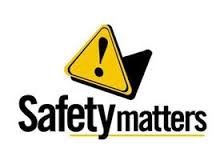Despite the differences between bee and wasp venom, symptoms of their stings are similar and can be treated in a similar way. A bee will sting only once, a wasp often stings multiple times. A bee also leaves its sting behind, embedded in the skin of the patient.
Bee and wasp stings may result in anaphylaxis, which is a serious life-threatening condition that must be treated swiftly. Do not hesitate to act!

First Aid Techniques
Although bee and wasp stings do not normally cause serious symptoms, anaphylaxis can be a life-threatening condition that must be treated swiftly. If the patient has a history of anaphylaxis and carries an Epinephrine auto-injector then ask the patient to administer it on themselves.
- Move the patient away from the area (hive or nest).
- Determine if the patient is allergic to bee stings.
- Scrape the bee sting off the skin using a sharp edged object such as a knife or bank card.
- Contact security and inform them of the situation.
- Administer Epinephrine (Epipen) immediately if appropriate.
- Transport the patient to professional medical assistance.
- Closely monitor for further signs of anaphylaxis.
For assistance with spider bites, contact the Poison Information Helpline on +27(0)21 931-6129
Source: http://www.venomworks.com/free-downloads/



